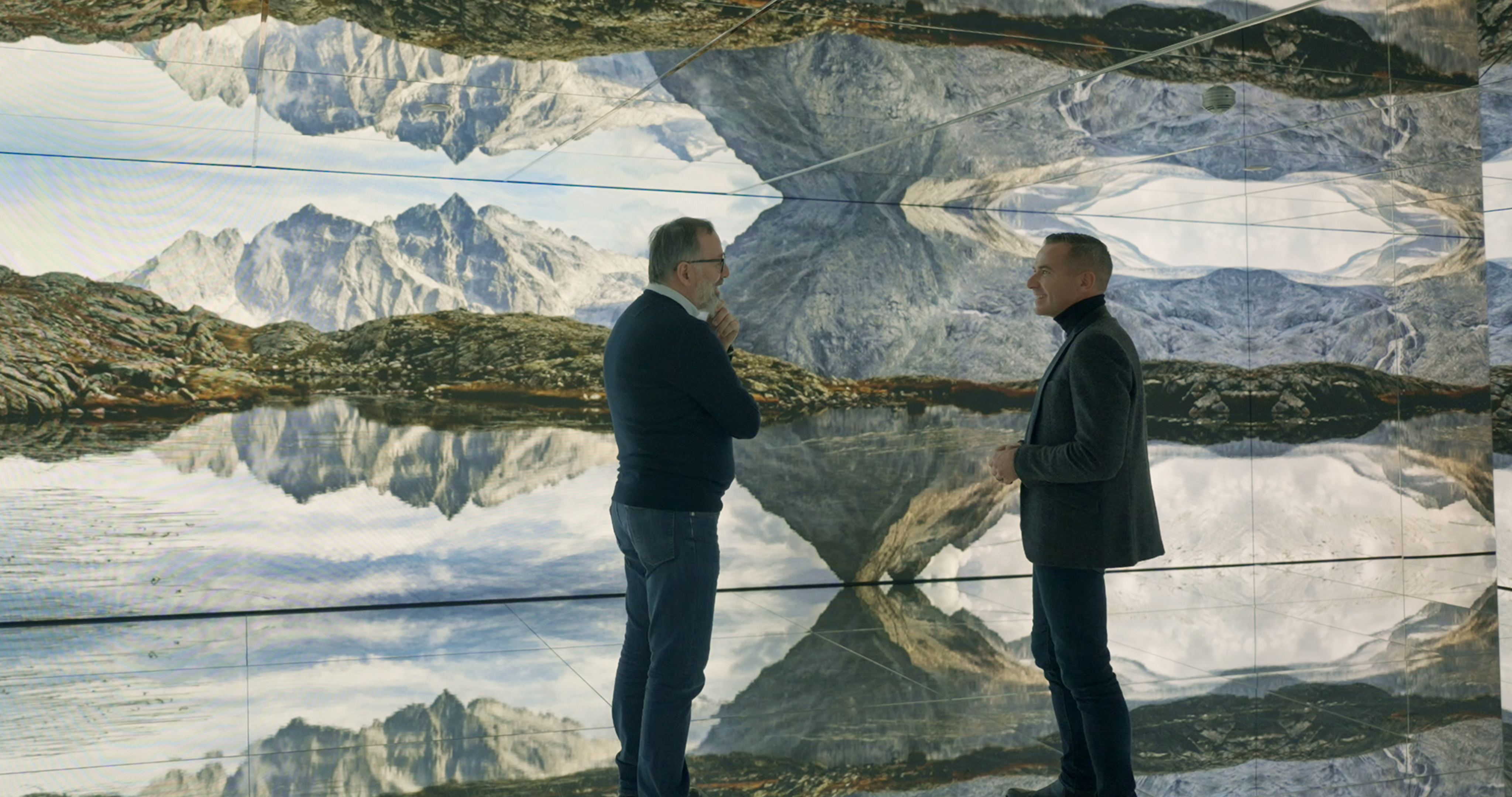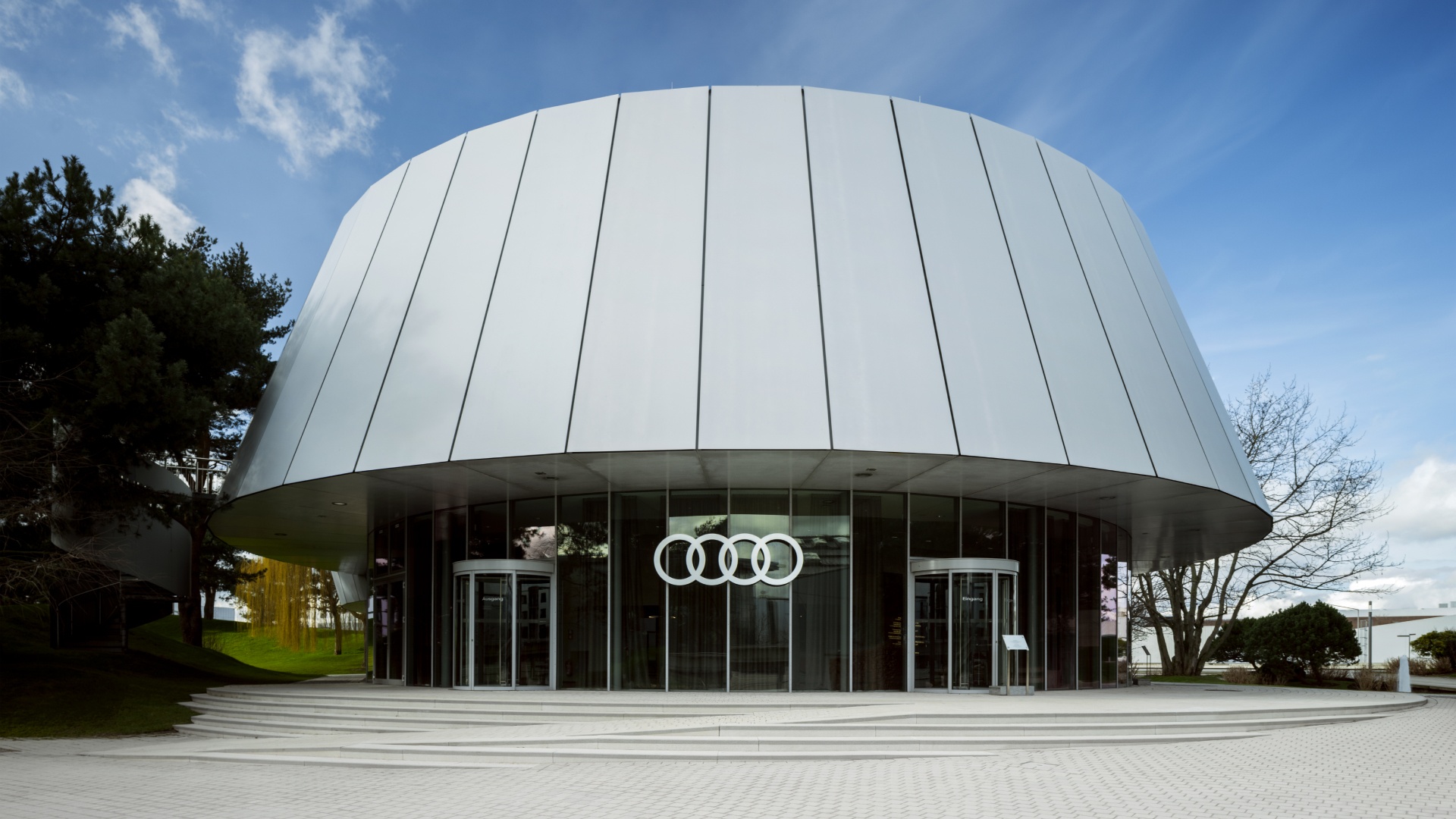Discover how the Audi Q8 Sportback e-tron combines the power of a spacious SUV with the elegance of a four-door coupé.
Five theses on Michelin-starred cuisine
The future is an attitude. Michelin-starred chef Norbert Niederkofler talks about the need to transform fine dining by rooting it in local, sustainable produce.

Norbert Niederkofler in the AlpiNN restaurant at the summit of Kronplatz mountain, near Bruneck, Italy. From his vantage point at 2,275 meters above sea level, he can name the valleys and towns where his local suppliers make their homes.
Norbert Niederkofler in the AlpiNN restaurant at the summit of Kronplatz mountain, near Bruneck, Italy. From his vantage point at 2,275 meters above sea level, he can name the valleys and towns where his local suppliers make their homes.
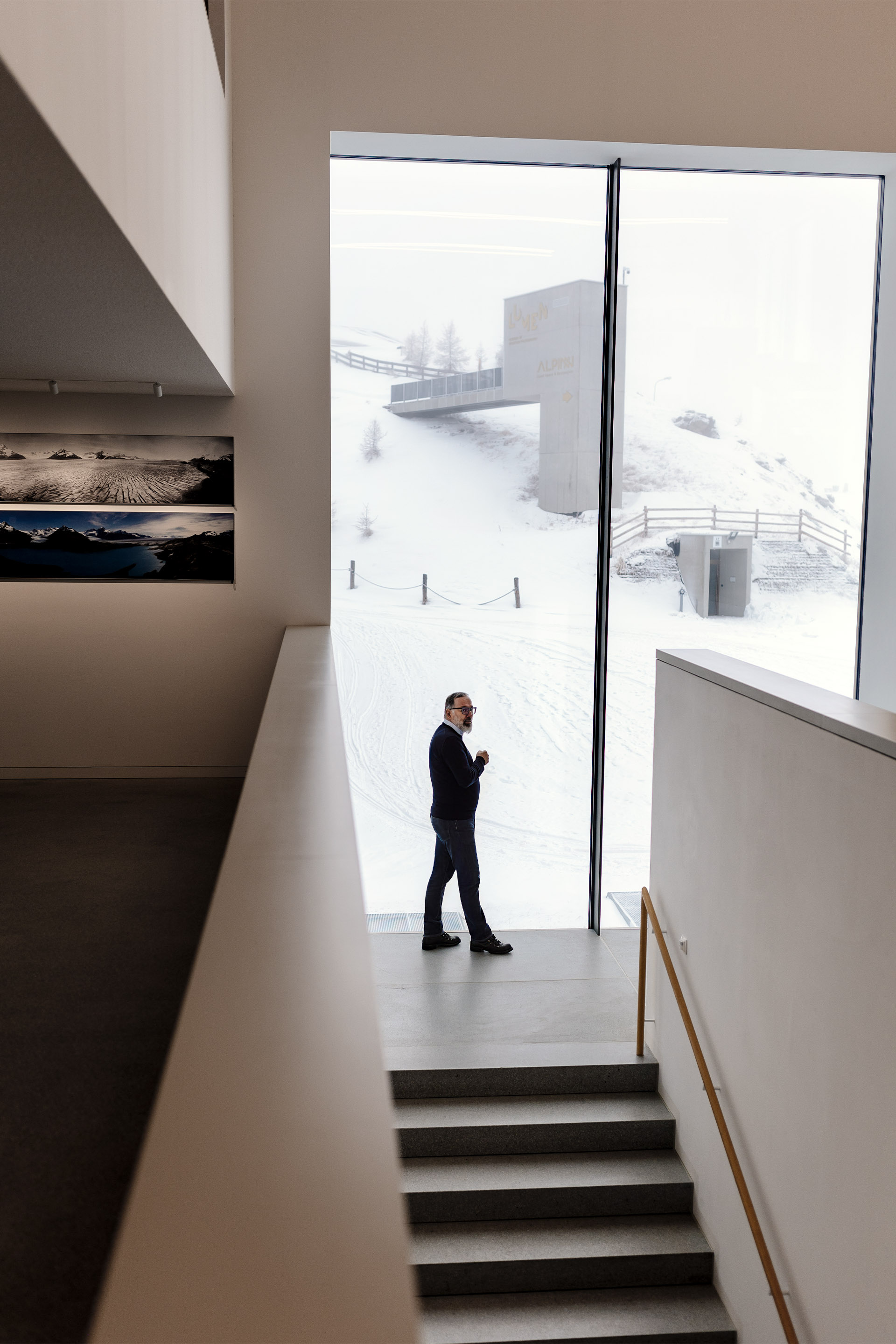
The AlpiNN restaurant shares a venue with the Lumen Museum of Mountain Photography, which explores the alpine reaches from the perspectives of mountaineering, tourism, politics, spirituality and history.
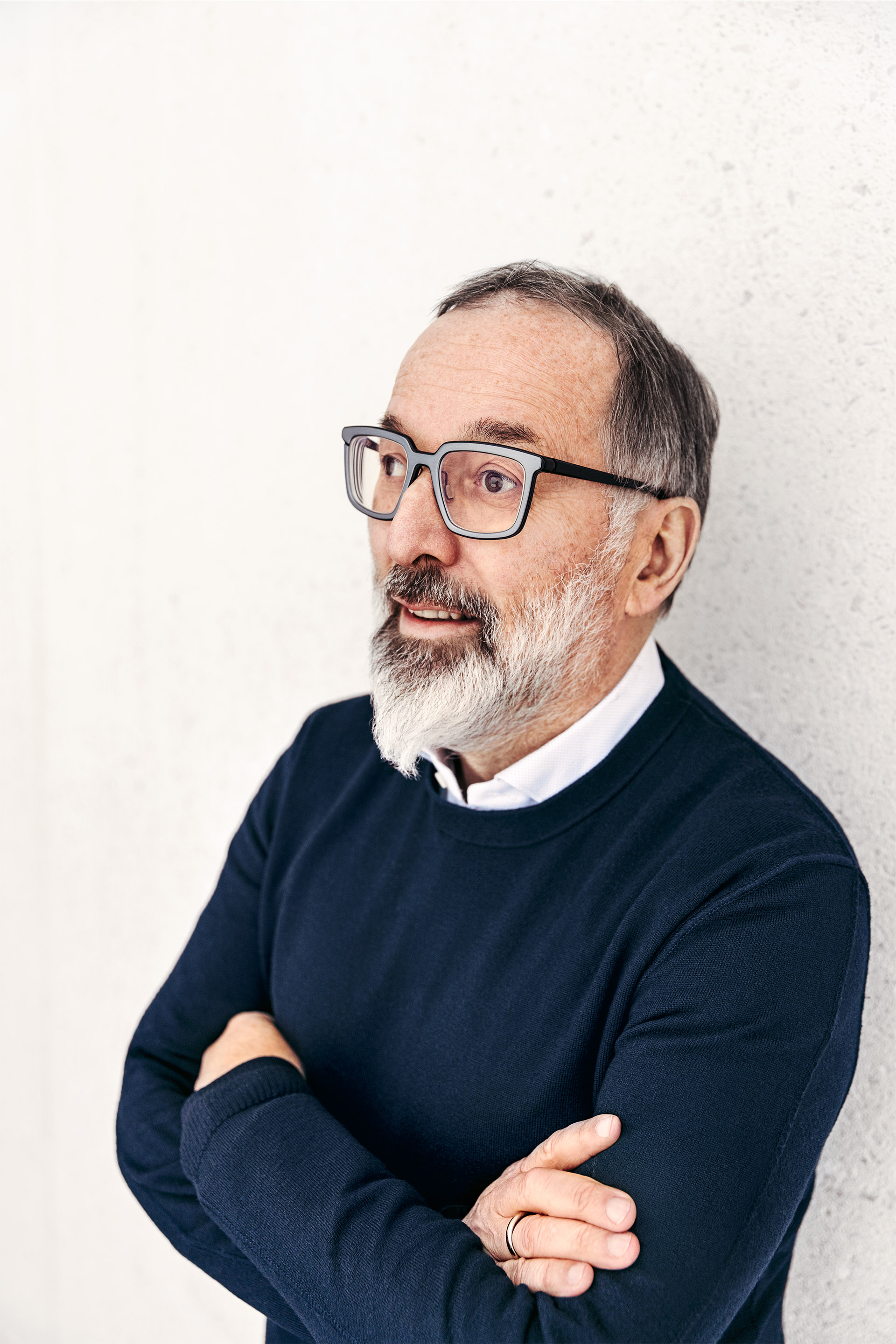
Norbert Niederkofler used to cook traditional haute cuisine. Now, he prepares inspirational three-star dishes in which sustainable regional fare is the gold standard.
The AlpiNN restaurant shares a venue with the Lumen Museum of Mountain Photography, which explores the alpine reaches from the perspectives of mountaineering, tourism, politics, spirituality and history.
Norbert Niederkofler used to cook traditional haute cuisine. Now, he prepares inspirational three-star dishes in which sustainable regional fare is the gold standard.
Norbert Niederkofler wants his dishes to tell stories about the mountains, farmers and animal breeders and their tough daily routine, the quality of their products, inherited traditions as well as about a sense of diligence, constancy and lightness of being. He does so with such panache that the creative cuisine served at Restaurant St. Hubertus has held on to its three Michelin stars since 2018. Diners can also savour the unique experience of Chef Niederkofler’s mountain cuisine at an altitude of 2,275 meters at the AlpiNN restaurant on Kronplatz mountain near Bruneck in South Tyrol. The chef’s uncompromisingly regional and sustainable approach not only shapes the dishes he serves his guests but also aims to plant the seeds of tomorrow’s cultural and social values: “Linking mountain culture and tradition with cuisine and fine dining from around the world can contribute to sustainable global growth and spur a new form of socio-economic development, one that does justice to all facets of the tightly intertwined relationships between product, producer, region of provenance and consumer.”
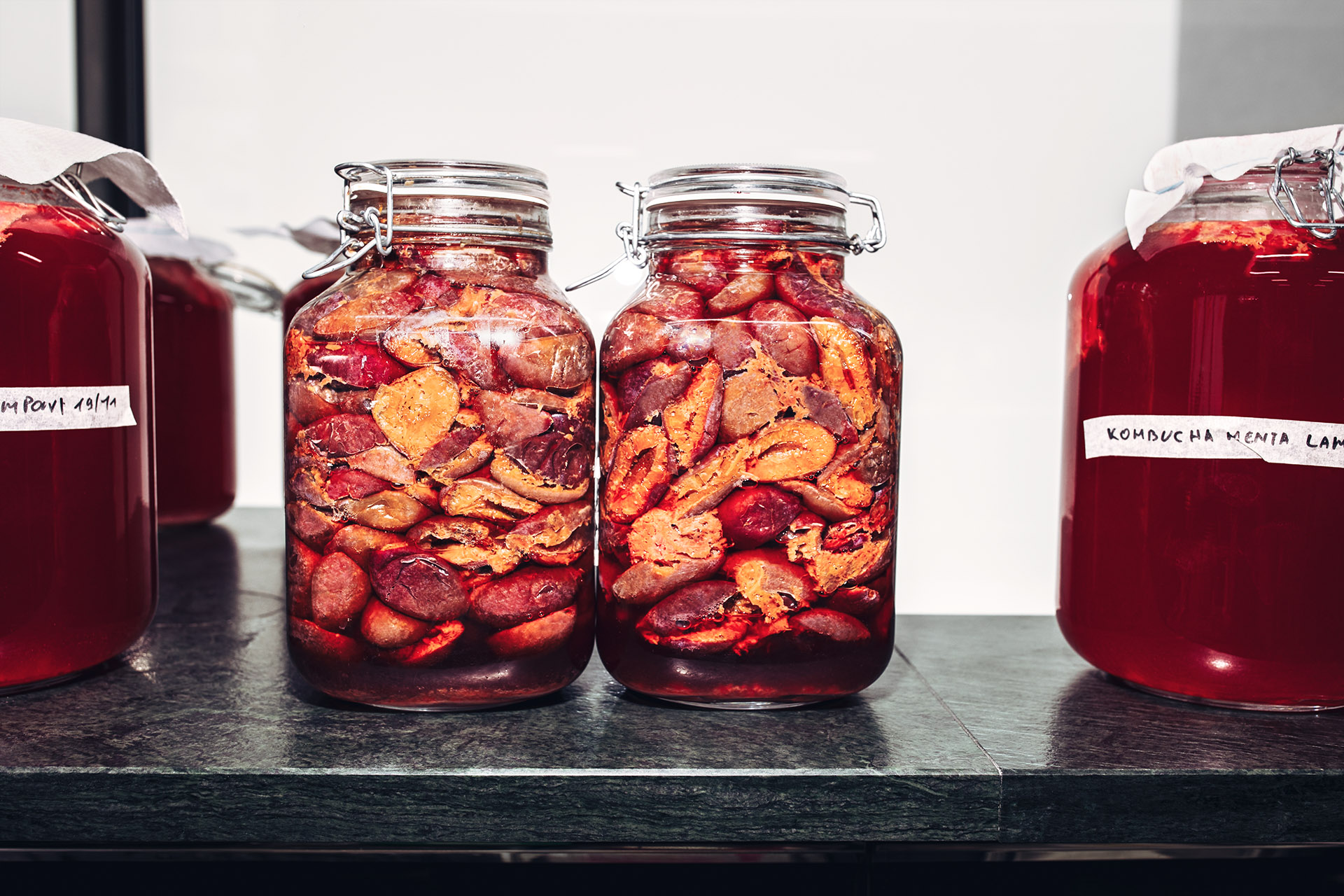
One of the iconic Cook the Mountain dishes is called “Tomato?” It’s created by making a mousse from fermented plums and serving it as bruschetta with basil oil and oregano.
One of the iconic Cook the Mountain dishes is called “Tomato?” It’s created by making a mousse from fermented plums and serving it as bruschetta with basil oil and oregano.
1. A time to reap and a time to sow
“As chefs, we must follow nature’s dictates. Which is to say, we must start rethinking things to the extent that we plan a year ahead. Here in South Tyrol, we do the lion’s share of our work in winter. While nature hibernates in the winter months, we plan the entire year ahead. That’s when we meet with our farmers to discuss what crops they can grow for us. From spring through summer to autumn, we never stop running – picking, gathering and harvesting so that our pantry is as full as possible. Those stores provision our kitchen throughout the winter. We use only seasonal vegetables. Greenhouse produce is taboo. At our restaurants, you can’t have tomatoes in winter unless they’re pickled or fermented. That meant turning our ideas about cooking on their head – with the result that we have now taken a very different course compared with ten years ago. Following the centuries-old system of planting, harvesting, canning and resting is sustainable and respectful of nature.”

Entrance to the 300-metre-long GenussBunker (indulgence bunker) – a former World War II tunnel – where 17 tons of cheese are now stored and ripened.
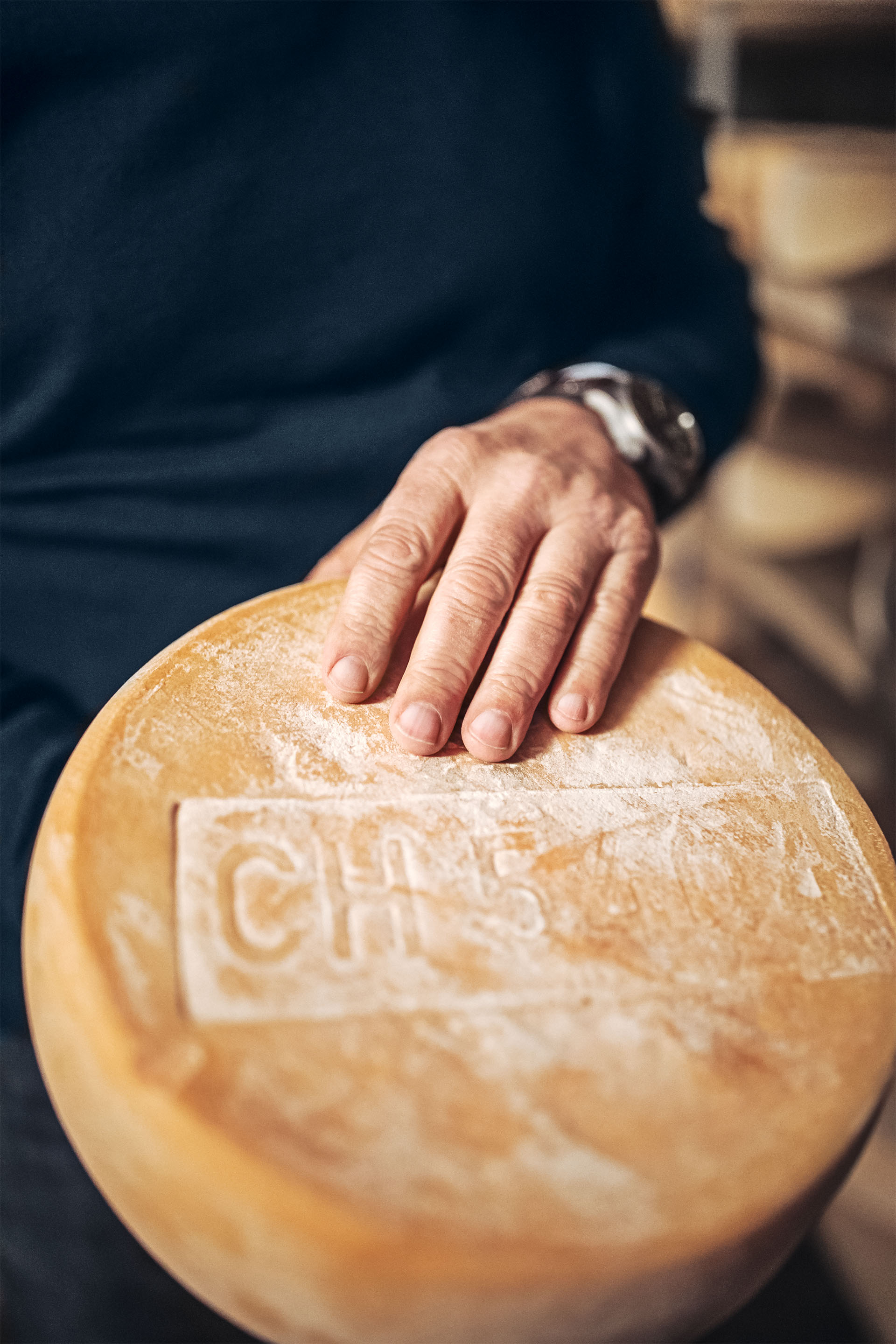
With humidity levels of 99.9 percent, the GenussBunker makes cheeses especially soft and creamy.
Entrance to the 300-metre-long GenussBunker (indulgence bunker) – a former World War II tunnel – where 17 tons of cheese are now stored and ripened.
With humidity levels of 99.9 percent, the GenussBunker makes cheeses especially soft and creamy.
2. Equal partnership between food service and farmers
“Behind every good chef there are even better producers. It’s a relationship that must be built on strong, direct lines of contact. With their fresh produce, small growers and livestock farmers who are passionate about sustainable agriculture not only create tremendous value but are also an important part of the local culinary heritage. I like to express my respect for what they do by calling them “terroir artisans”. In a partnership of equals, we call on all their knowledge to jointly establish a local economic cycle. Together, we plan the cultivation of their fields with a variety of crops so that they have a good harvest and we get different products throughout the year. To illustrate the point, we now cook with about 20 different varieties of carrot that we use fresh, can store for extended periods and ferment for use over all four seasons. We also believe in fair payment. That means cutting out the middlemen and paying farmers directly so that they receive higher prices for their local produce. While mountain cuisine is accessible to everyone, elevating the flavours to gourmet delights requires simple, pristine raw ingredients.”
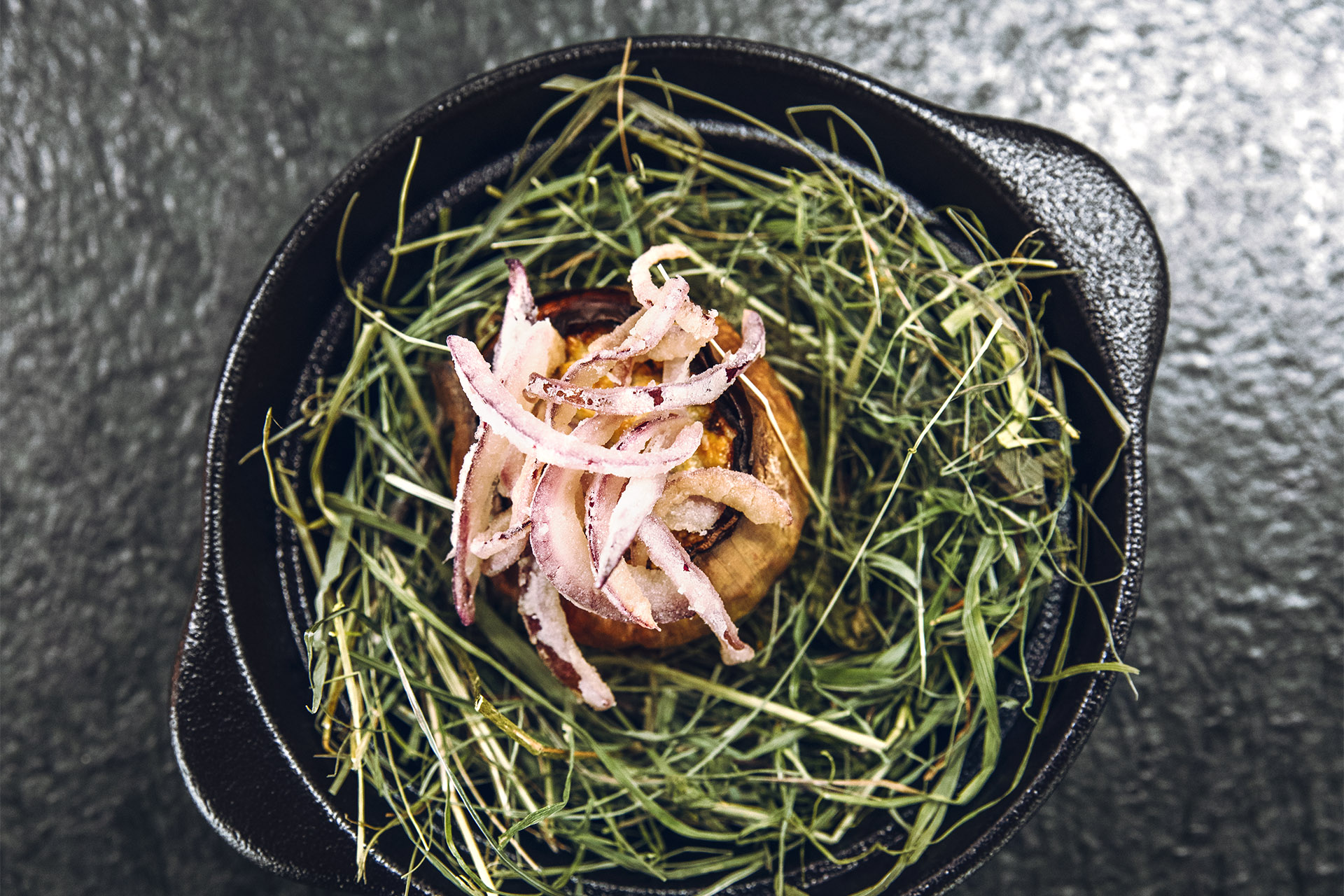
When a farmer unexpectedly harvested a bumper onion crop, Norbert Niederkofler did not leave his supplier sitting on a surplus. Instead, he created an onion cooked in ashes with Schwarzenstein cheese gratin, served on mountain meadow herbs.
When a farmer unexpectedly harvested a bumper onion crop, Norbert Niederkofler did not leave his supplier sitting on a surplus. Instead, he created an onion cooked in ashes with Schwarzenstein cheese gratin, served on mountain meadow herbs.
3. Creative culinary arts turn regional into a rare treat
“When it comes to seasonality and regionality, appreciating local produce is one thing. Each of our dishes is a tribute to the mountains – the hard work of the farmers and breeders, the quality of their produce, inherited traditions, the careful stewardship and perseverance. Since we only use certain ingredients at specific times of the year, our dishes are strictly seasonal. But putting value to what you find in your back garden, so to speak, is another thing entirely. Based on that, we had to create a cuisine that is attractive and desirable. Cook the Mountain is not just a salad made from ten local wild herbs. I have to be creative with the ingredients that are available and make the best use of them to craft dishes that live up to our standing as a three-star restaurant. That’s the inventive part because there’s no way of knowing exactly when a vegetable will arrive and what it will be like. Everything depends on how wet spring is, how hot summer is and how abundant the harvest. So we have to remain flexible and cook what’s on hand to best effect. What’s more, we adhere to a zero-waste philosophy. Our recipes are designed so that no food lands in the trash. We use every part of the produce – from potato peel through meat scraps to the water vegetables are cooked in. Everything has the potential to become an ingredient in creative recipes. While we harken back to old traditions, we obviously also make innovative use of today’s technology. Our dishes often take a leaf out of Asian recipe books, whether in the form of fermented vegetables or adding soy sauce. Of course, ours isn’t made from soya bean sprouts. Instead, we use local products, such as mountain lentils in this instance. I firmly believe that star-quality seasonal and regional fare has only taken off because our cuisine is so creative.”

Soy sauce in South Tyrol? It’s not the antithesis to regionality and sustainability you might think. Norbert Niederkofler and his team make it from mountain lentils.
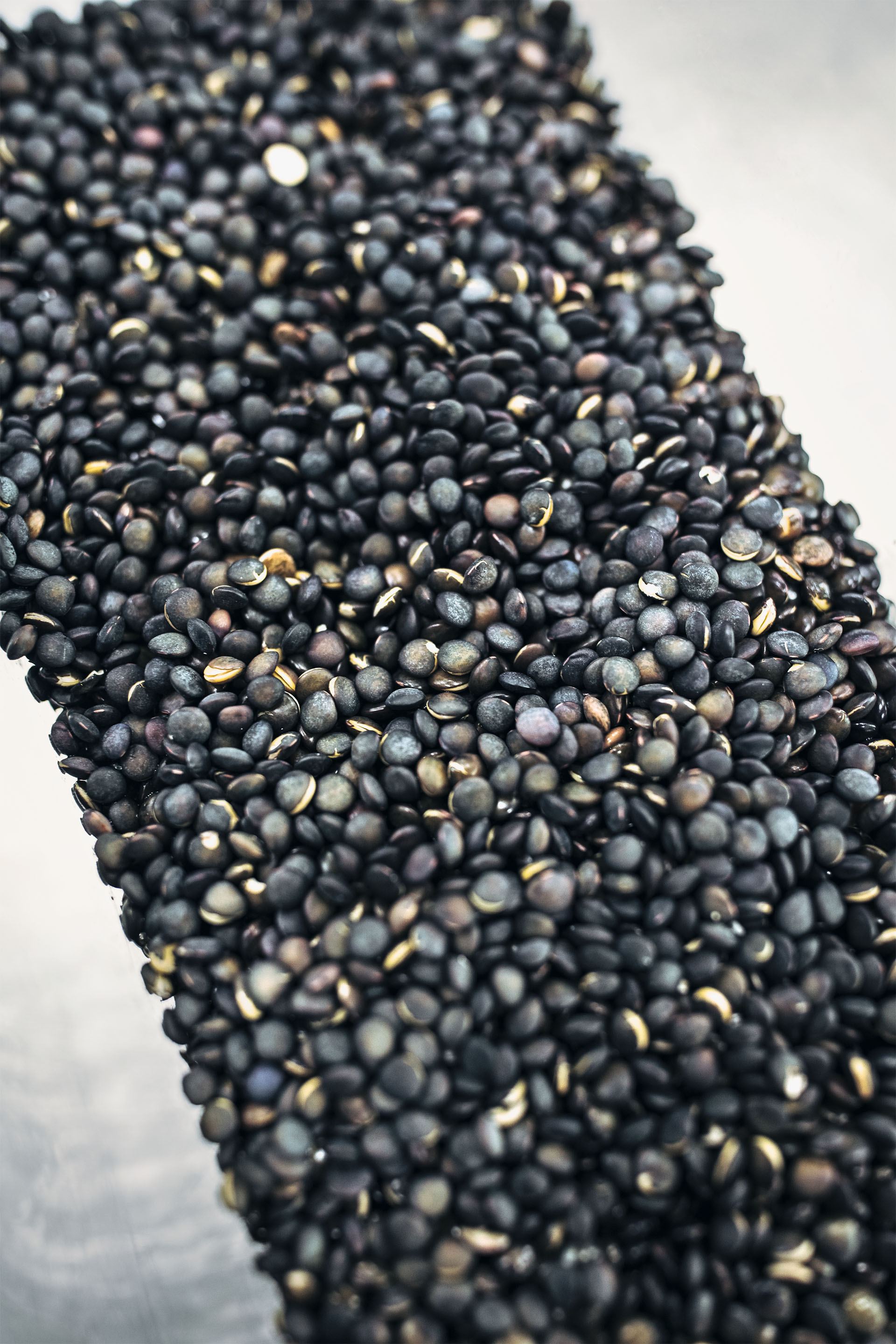
The lentil mash matures, ferments and is then turned into a delicious sauce over the course of 18 months.
Soy sauce in South Tyrol? It’s not the antithesis to regionality and sustainability you might think. Norbert Niederkofler and his team make it from mountain lentils.
The lentil mash matures, ferments and is then turned into a delicious sauce over the course of 18 months.
4. Restaurant dining is experiencing a cultural concept
“For me, a restaurant is a place where food plays the starring role and where gathering around a table is a shared experience in a cosy living-room atmosphere. Ultimately, a restaurant is a cultural concept. That’s because elevating food above its function as nutrition turns dining into an element that connects people. Our AlpiNN restaurant at the summit of the Kronplatz mountain is an impressive case in point. Set in breathtaking scenery, it allows your gaze and your mind to roam freely, while merging tradition and innovation. South Tyrolean designer Martino Gamper created the dining rooms in his signature style. Every last detail – from the furnishings to the cuisine – speaks to the region, sustainability and a sense of home. Thanks to the panoramic view, I can point to the valleys and villages where the restaurant’s suppliers grow our produce. In this “living room on the mountain”, we consistently pursue our Cook the Mountain philosophy.”
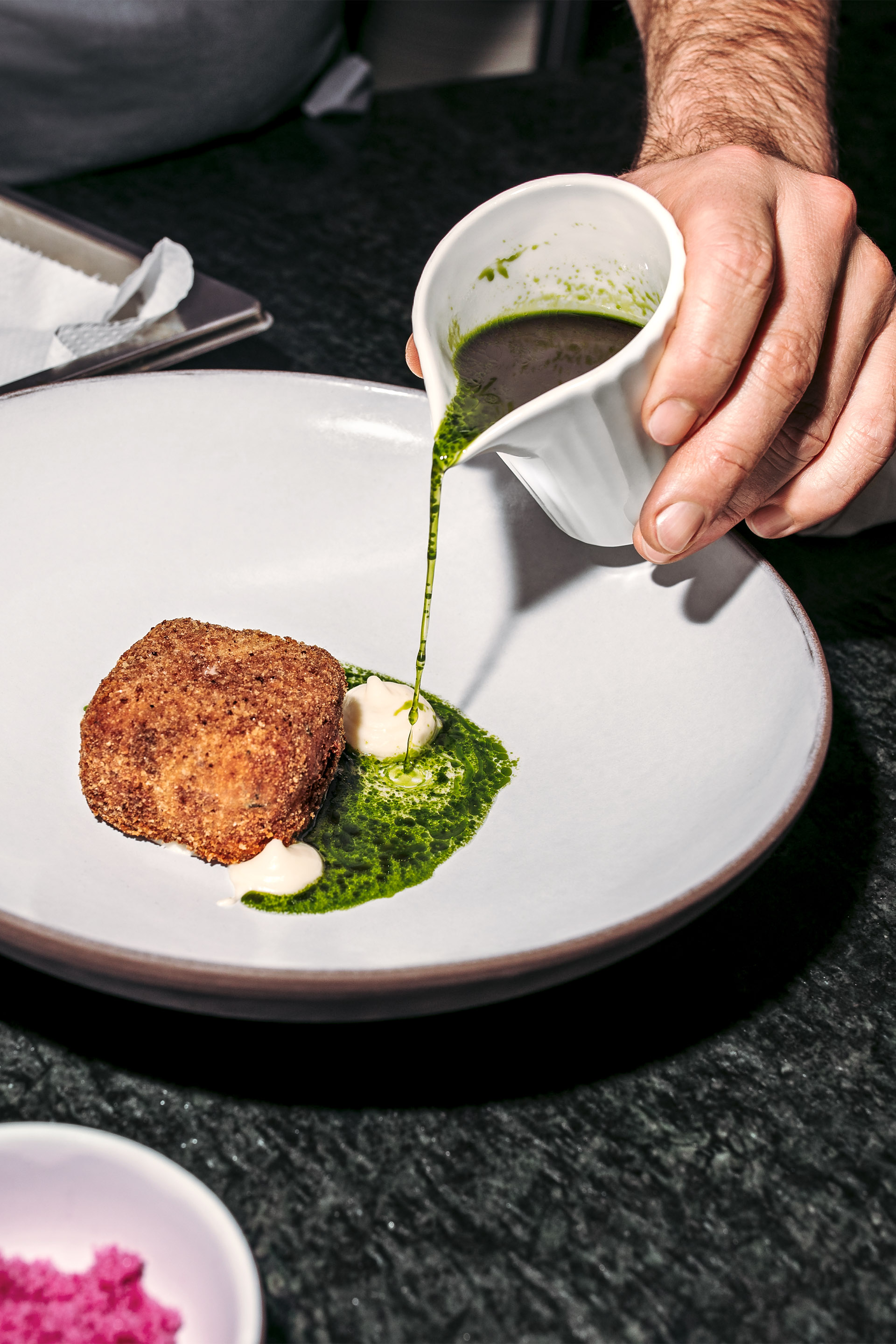
A dish dubbed “not your traditional dumpling” is a crispy cube of dumpling dough with melted mountain cheese at its heart that’s served with bacon broth and cream of chives.
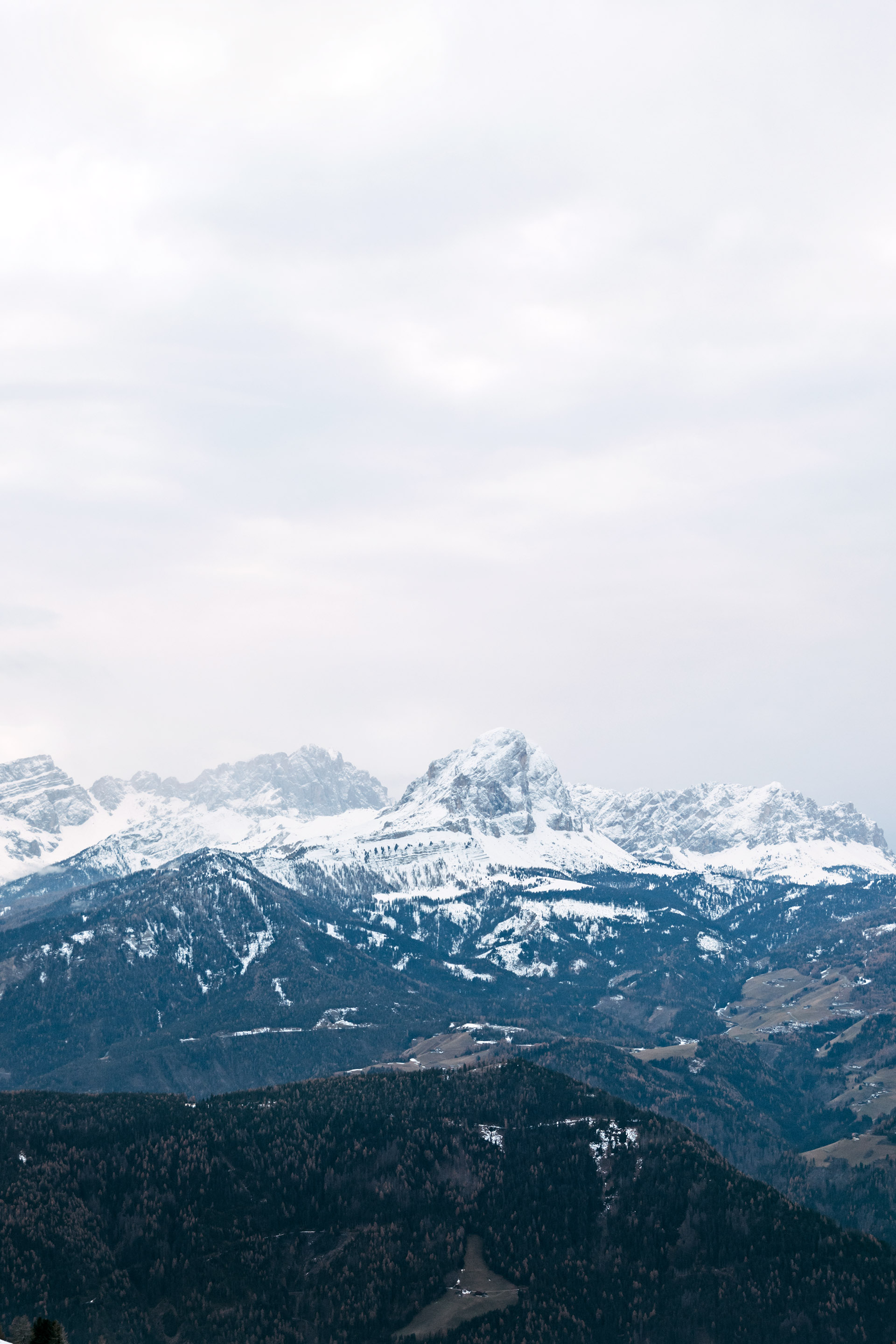
The mountain landscape of South Tyrol is home to Norbert Niederkofler and the inspiration for his Cook the Mountain concept.
A dish dubbed “not your traditional dumpling” is a crispy cube of dumpling dough with melted mountain cheese at its heart that’s served with bacon broth and cream of chives.
The mountain landscape of South Tyrol is home to Norbert Niederkofler and the inspiration for his Cook the Mountain concept.
5. If it’s not valued, it won’t survive
“A restaurant will only have a viable future if it’s not only commercially sustainable, but also sustainable for its employees, especially in terms of the hours they put in. That’s why we have made it our mission to build a team of employees and assure them a very good quality of life. In all other professions, there’s usually a set working week with time off. But in food service? Free time is in short supply when you’re collecting mushrooms in the forest at six in the morning and still standing in the kitchen at midnight. In order to motivate our team and retain talent, we have to change the restaurant system and make it attractive for the next generation. By the same token, patrons who appreciate local products and fair working conditions should be willing to pay for them. But I am optimistic. After all, we’ve proven to the next generation of chefs that it is possible to earn three Michelin stars cooking local cuisine from nature. We have paved the way forward with a system that works just as well in Calabria or anywhere else in the world. You just have to return to the local culture and traditions, rebuilding and reinterpreting them. Throughout Italy, there are roughly 20 Michelin-starred chefs working according to our philosophy. All of them trained with us. That’s how you bring about change.”
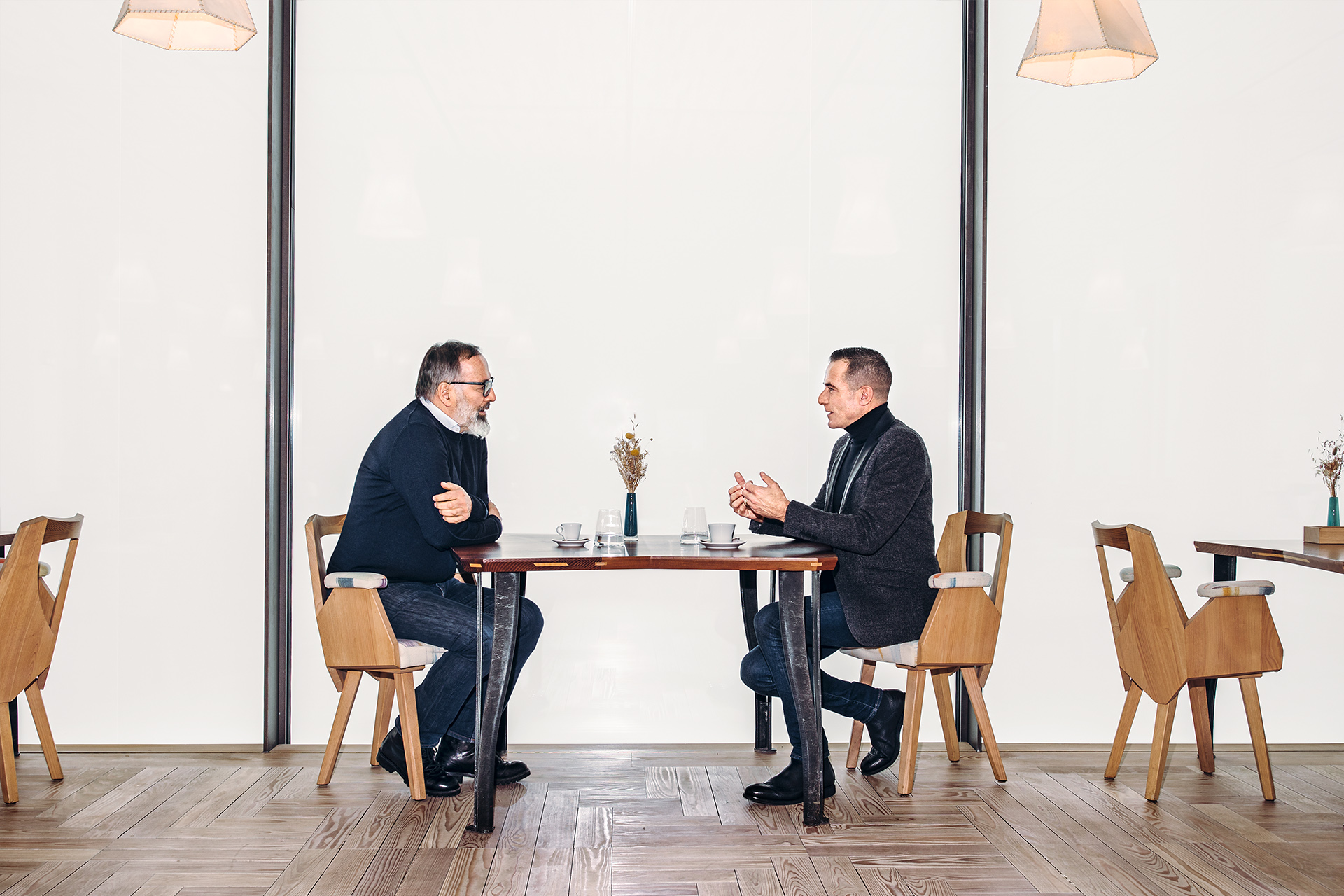
Henrik Wenders (right), Head of Brand at Audi AG, in conversation with Norbert Niederkofler.
Henrik Wenders (right), Head of Brand at Audi AG, in conversation with Norbert Niederkofler.
Conversations on Progress: Henrik Wenders meets Norbert Niederkofler
